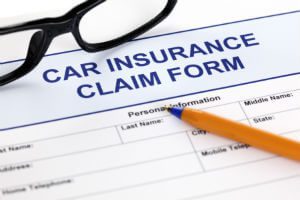 In most states, car crash victims pursue compensation from the at-fault driver’s insurance policy after an accident. However, Minnesota is one of a handful of states that follows a no-fault insurance system for motor vehicle accidents.
In most states, car crash victims pursue compensation from the at-fault driver’s insurance policy after an accident. However, Minnesota is one of a handful of states that follows a no-fault insurance system for motor vehicle accidents.
This system can have a significant impact on your ability to recover full compensation for your damages or pursue a claim against the at-fault party.
The experienced Minneapolis car accident lawyers at TSR Injury Law have represented many injury victims, helping them to obtain compensation. Call today to request a free, no-obligation consultation. We are ready to discuss your situation, answer your legal questions and explain more about Minnesota’s no-fault system.
What Does No-Fault Mean?
There are a lot of misconceptions about no-fault coverage. No-fault means that fault is not a consideration in awarding compensation for medical bills, wage loss or some property damage claims. Rather than pursuing compensation for these damages from the at-fault party, injured victims must file a claim with their own insurance companies. The insurance company will provide compensation for covered losses, regardless of who was at fault for the accident.
That said, no-fault does not mean the insurance company will pay for all the losses victims suffered in the crash. No-fault insurance only covers the expenses that directly result from your injuries.
No-fault insurance is also called Basic Economic Loss Benefits.
Deadline for Filing a No-Fault Claim in Minnesota
A no-fault claim must be presented within a reasonable amount of time after a crash. Each policy will contain language determining the time, but the general rule is the sooner after a crash you file a claim, the better.
If you were injured in a crash, call your agent and set up a claim immediately. Legal help can ensure the forms are correctly filled out and preclude the insurance company from gathering improper information.
It is common for insurance companies to ask for an Application for Benefits, medical releases, wage loss forms and statements of crash facts. Some require an independent doctor to review them before bills are processed.
What Are the Pros and Cons of No-Fault?
The no-fault system was established to ease the burden on courts and allow accident victims to receive prompt treatment for their injuries without worrying about who was at fault or if the bad driver even had proper insurance.
In other words, it takes a lot less time to process these claims compared to claims against the other driver’s liability insurance. This means less stress and fewer hassles for injured victims.
However, there are disadvantages to Minnesota’s no-fault insurance system. The biggest disadvantage is that this system limits your ability to file a bodily injury claim against the at-fault driver. Your claim must clear a certain threshold, otherwise, you cannot seek compensation for pain and suffering and other non-economic damages from the liable driver.
Another downside to no-fault claims is that they do not hold the other driver accountable. Although this may be disappointing to some crash victims, they can still recover significant compensation from their no-fault coverage.
When Did Minnesota Become a No-Fault Insurance State?
Minnesota’s no-fault car insurance law took effect on January 1st, 1975. Since then, several more states have enacted their own no-fault laws. As of January 2023, there are 11 other no-fault states, including Florida, Hawaii, Kansas, Kentucky, Massachusetts, Michigan, New Jersey, New York, North Dakota, Pennsylvania and Utah. The remaining 38 states have fault-based systems, also called tort systems.
What Are the No-Fault Benefits in Minnesota?
Minnesota law requires all licensed drivers to purchase Personal Injury Protection (PIP) coverage, which is the no-fault component of your insurance.
Minimum Requirements for PIP Coverage
The state minimum for PIP coverage is $40,000 per person per accident. The $40,000.00 is divided into two $20,000.00 claims. Up to $20,000 of this amount can be used to pay for hospital and medical expenses and the remaining $20,000 covers non-medical expenses like lost wages and replacement services like housekeeping.
There are limits and time considerations for each claim. For example, the first 7 days are free for replacement services.
What Medical Expenses Are Covered by No-Fault Insurance?
Minnesota crash victims can seek compensation for all reasonable medical expenses for necessary care, which may include:
- Surgery
- Rehabilitation services
- Prescription medications
- Hospital stays
- X-rays
- Transportation to the hospital in an ambulance
- Chiropractic care
- Prosthetic devices
- And more
Income Loss Benefits
If the injury you suffered in the crash prevents you from working, your PIP insurance provides up to 85 percent of your present and future gross income, with a maximum of $500 per week. This includes the cost of hiring someone else to do the things necessary to maintain your income if you are self-employed.
Funeral Expenses
PIP also covers $5,000.00 for funeral expenses in case the crash caused death.
Increasing Your PIP Coverage
You can purchase more than the minimum amount of PIP insurance if you want to. If you own multiple vehicles with the same company, “stacking” the benefits is also available. This will double or triple the coverage available. For example, if you own two cars and stack benefits, you will have $40,000.00 in medical and $40,000.00 in wage coverage. The weekly wage benefits would also go from $500 to $1000.00 and replacement services from $200.00 a week to $400.00.
What Are the Priorities for No-Fault Coverage in Minnesota?
There may be various no-fault policies that may cover you in the event of an accident.
While there are exceptions, these are the typical priorities for no-fault coverage:
- The vehicle you own and are insured with;
- If you do not own an insured vehicle, you may get coverage from a resident relative’s policy;
- If you do not live with a relative who has an insured vehicle, you may be covered by the car insurance of a vehicle you were a passenger in or that struck you as a pedestrian.
- Assigned Claims is free no-fault coverage that is available to certain injured people. If you do not own an insured vehicle, do not reside with anyone who owns an insured vehicle and the car that you are in (but do not own) or that hits you has no insurance, then you may qualify for free coverage.
How No-Fault Affects the Ability to File a Car Accident Lawsuit
After a crash, you must first collect on your PIP benefits. After that, and if you meet the injury threshold, you may be eligible to file an injury claim (also called a bodily injury claim) for pain and suffering against the at fault driver’s insurance. There are five thresholds.
- Death
- $4,000.00 in medical treatment not including X-Ray or MRI scans
- Permanent injury
- Unable to attend work for at least 60 days
- Have a permanent disfigurement, like a scar, from the crash
Some crashes may meet one of these criteria, which is why all Minnesota drivers are required to carry the minimum insurance coverage of:
- $30,000 in liability insurance for one person’s bodily injury
- $60,000 of liability insurance for injuries to two or more people
- $10,000 for damage to the victim’s vehicle
What if the At-Fault Driver is Uninsured or Underinsured?
Minnesota law also requires drivers to carry uninsured coverage of $25,000 for injuries to one person, $50,000 for injuries to two or more people and $10,000 for property damage. Additionally, drivers must carry underinsured coverage of $25,000 for injuries to one person and $50,000 for injuries to two or more people.
You can make a claim under these policies if the other driver’s liability insurance is insufficient to cover the damages stemming from the crash. You may also be able to make a claim under your comprehensive or collision coverage.
What Compensation Can You Recover in a Car Accident Lawsuit?
If your crash was so severe that you have the right to step outside of the no-fault system to file a liability insurance claim or lawsuit, you can seek compensation for the damages not covered by your PIP insurance.
These damages may include:
- Physical pain and emotional suffering: These are the physical pain and psychological/emotional toll caused by your injuries, such as depression, post-traumatic stress disorder, lost enjoyment of life and lost companionship.
- Medical expenses that exceed PIP coverage: Some examples include ongoing medical care that arise after the conclusion of your case.
- Loss of earning capacity
- Lost wages
- And more
How an Injury Lawyer Can Help
If you were injured in a crash, it is important for you to seek medical attention. After that, you should contact a personal injury lawyer to discuss your claim.
Although no-fault insurance is intended to make the claims process easier, many of our clients have not had this experience until they hired us. Their claims are sometimes wrongfully denied, or they are subjected to unnecessary delays.
The personal injury team at TSR Injury Law is dedicated to helping victims receive maximum compensation. We offer a free, no-obligation consultation to discuss your claim in more detail.
Contact us today to learn about your legal rights. (612) TSR-TIME
 Insurance companies often offer compensation to victims very quickly. They know victims are anxious to receive compensation because of mounting medical expenses, car damage, rental bills and wage loss. Sometimes insurance companies will try to settle the property claim and then add a few dollars for the “rest of the claim” when an injured person does not understand what they are settling for. Insurance companies also know victims have no idea what a “case” is worth, and that people receive on average three times more with legal representation.
Insurance companies often offer compensation to victims very quickly. They know victims are anxious to receive compensation because of mounting medical expenses, car damage, rental bills and wage loss. Sometimes insurance companies will try to settle the property claim and then add a few dollars for the “rest of the claim” when an injured person does not understand what they are settling for. Insurance companies also know victims have no idea what a “case” is worth, and that people receive on average three times more with legal representation.

 You may have heard that insurance companies are notorious for looking for ways to deny or devalue claims. They do this with all kinds of claims, including dog bite claims. Dog bite claims are strict liability claims based on Minnesota Statute 347.22. Victims do not need to prove “negligence”, as is typical in normal injury cases, but strict liability does not mean absolute liability.
You may have heard that insurance companies are notorious for looking for ways to deny or devalue claims. They do this with all kinds of claims, including dog bite claims. Dog bite claims are strict liability claims based on Minnesota Statute 347.22. Victims do not need to prove “negligence”, as is typical in normal injury cases, but strict liability does not mean absolute liability. In most states, car crash victims pursue compensation from the at-fault driver’s insurance policy after an accident. However, Minnesota is one of a handful of states that follows a no-fault insurance system for motor vehicle accidents.
In most states, car crash victims pursue compensation from the at-fault driver’s insurance policy after an accident. However, Minnesota is one of a handful of states that follows a no-fault insurance system for motor vehicle accidents. The last thing people want to deal with after renting a car is an accident. You may be renting a car because your regular car was damaged in an accident. You may also be on vacation.
The last thing people want to deal with after renting a car is an accident. You may be renting a car because your regular car was damaged in an accident. You may also be on vacation. Our firm has once again taken part in the Toys for Tots toy drive. We donated toys for boys and girls between the ages of three and 18.
Our firm has once again taken part in the Toys for Tots toy drive. We donated toys for boys and girls between the ages of three and 18.